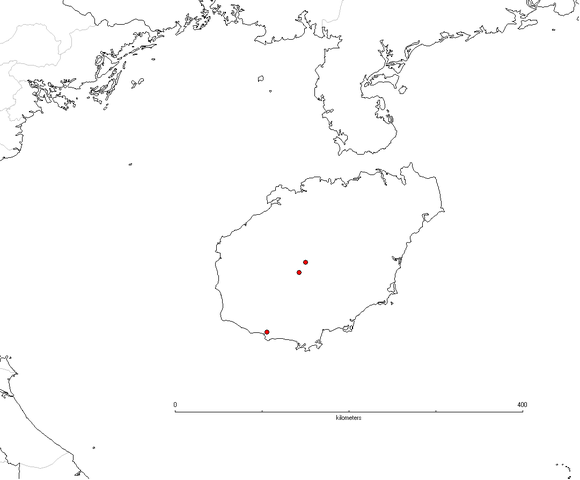Nomenclature
Accepted name/Authority/Place of publication:
Erycibe myriantha Merr., Lingnan Sci. J. 13: 70. 1934.
Description
Habit:
Shrubs, scandent, 4–7 m tall; axial parts ± densely rust-colored pubescent. Branches terete, subglabrous; branchlets indistinctly angulate, ca. 2 mm in diam.
Leaves:
Petiole 3–9 mm; leaf blade oblong-lanceolate, 5–9 × 2–4 cm, papery, glabrous, base cuneate, apex acuminate; lateral veins 3 or 4 pairs, prominent abaxially.
Inflorescences:
Inflorescences terminal, paniculate, loose, 5–24 cm, many flowered.
Flowers:
Sepals obovate or circular, ca. 3 mm, densely yellow-orange velutinous abaxially. Corolla white, ca. 8 mm; lobules oblong-obovate, margin ± entire or undulate, midpetaline bands rust-colored woolly. Stamens ca. 2.5 mm; filaments dilated basally; anthers ovoid, apex acuminate. Ovary ellipsoidal; stigma conical, with ridges,
Fruits:
Fruit brown, ellipsoidal, 1.3–1.5 × 1–1.2 cm.
References:
Fang R.C., G. Staples, et al. 1995. Convolvulaceae in P. Raven & C.Y. Wu (eds.) Flora of China 16: 271–325.
Biogeography, Ecology and Natural History
Distribution Map:

Distribution:
China (Guangdong, Hainan).
Ecology:
Forests,
thickets, stream banks, dry and sandy soils; 400–600 m.
Phenology:
Flw. Jul-Dec, frt. Mar-Apr.
References:
Fang R.C., G. Staples, et al. 1995. Convolvulaceae in P. Raven & C.Y. Wu (eds.) Flora of China 16: 271–325.
Other information
Common names and uses:
Common names and uses: duo hua ding gong teng (Chinese).
Authorship for webpage
Editor:
George Staples, Esmond Er
Contributors:

Classification:

Add new comment